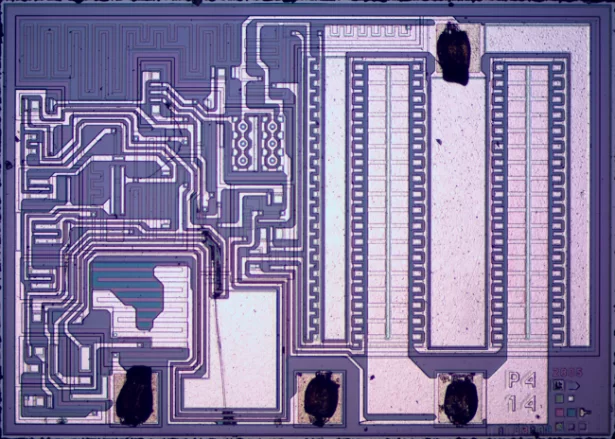Under a microscope, a silicon chip is a mysterious world with puzzling shapes and meandering lines zigzagging around, as in the magnified image of a 7805 voltage regulator below. But if you study the chip closely, you can identify the transistors, resistors, diodes, and capacitors that make it work and even understand how these components function together. This article explains how the 7805 voltage regulator works, all the way down to how the transistors on the silicon operate. And while exploring the chip, I discovered that it is probably counterfeit.
A voltage regulator takes an unregulated input voltage and converts it to the exact regulated voltage an electronic circuit requires. Voltage regulators are used in almost every electronic circuit, and the popular 7805 has been used everywhere from computers[1] to satellites, from DVD player and video games to Arduinos[2]. and robots. Even though it was introduced in 1972 and more advanced regulators[3] are now available, the 7805 is still in use, especially with hobbyists.
The 7805 is a common type of regulator known as a linear regulator. (As its name hints, the 7805 produces 5 volts.) A linear regulator is built around a large transistor that controls the amount of power flowing to the output, acting similar to a variable resistor. (This transistor is visible in the right half of the die photo above.) A drawback of a linear regulator is that all the “extra” voltage gets converted into heat. If you put 9 volts into a linear regulator and get 5 volts out, the extra 4 volts gets turned into heat in the regulator, so the regulator is only about 56% efficient. (The main competitor to a linear regulator is a switching power supply – a much more efficient, but much more complicated way to produce regulated voltage. Switching power supplies have replaced linear regulators in many applications, such as phone chargers and computer power supplies.)
For more detail: Reverse Engineering A Counterfeit 7805 Voltage Regulator

